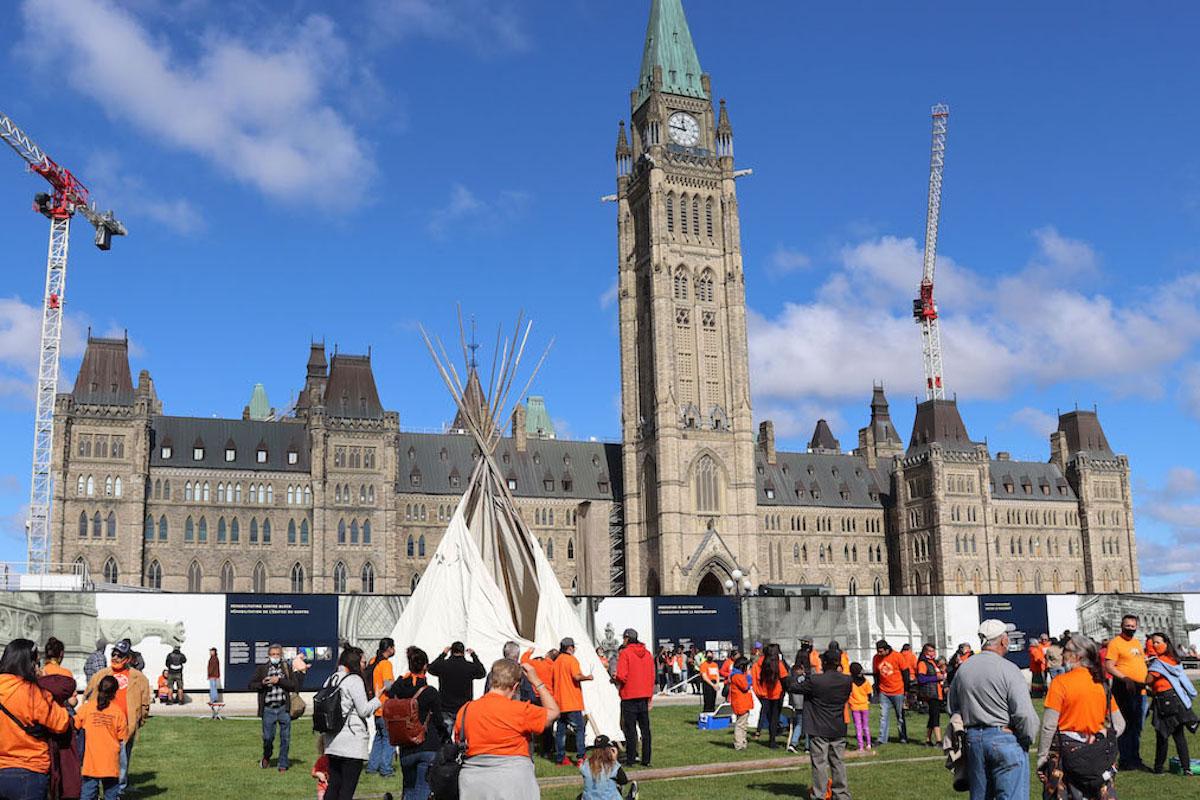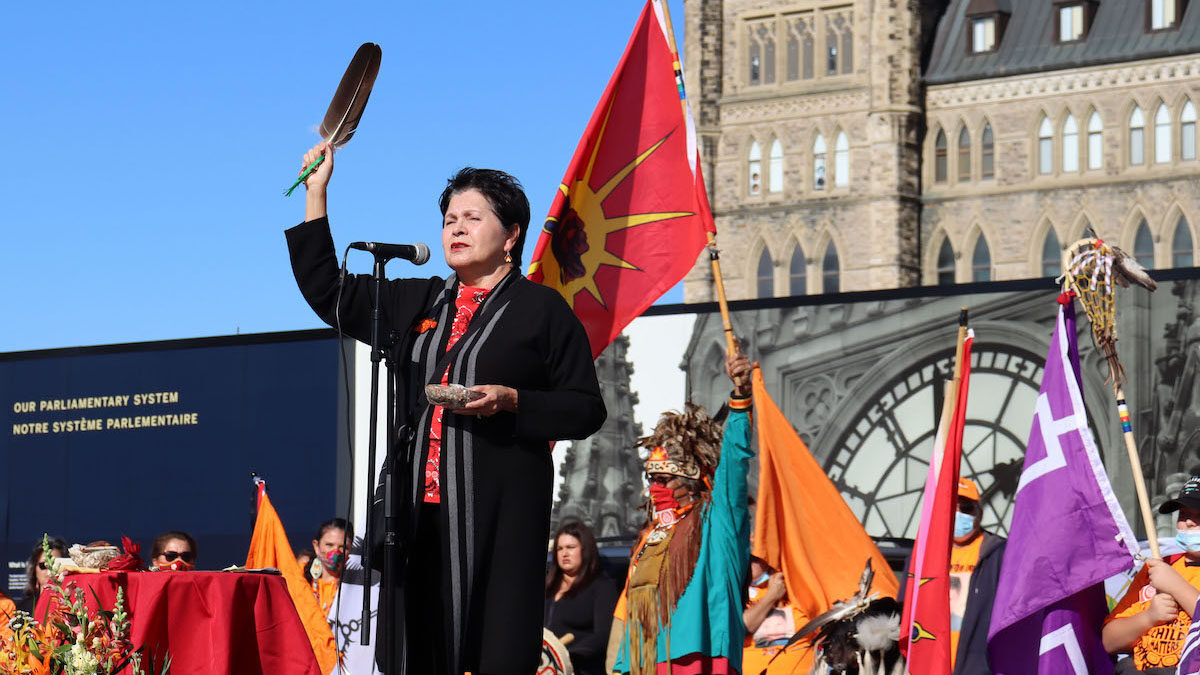Algonquin Elder Claudette Commanda, from Kitigan Zibi Anishinabeg, is seen speaking at the opening ceremony. "Canada must heal on the foundation of Indigenous knowledge and wisdom and love and kindness and respect," said Commanda. "Take this beautiful gift that we're offering you ... and we'll walk together, to turn this country into a beautiful country for all our children." [Photo © Brynn Brieda]
This past Sept. 30 will be forever known as the first National Day for Truth and Reconciliation, otherwise known as Orange Shirt Day. Indigenous peoples — including survivors of Canada’s residential school system — and allies gathered together on Parliament Hill to reflect and offer support. Thousands converged on downtown Ottawa to mark the historic day with ceremonies, advocacy, performances, and a female-led spirit walk to Confederation Park. And Capital Current was there to observe and record in pictures this special day.
Crowds gather near a teepee erected on Parliament Hill marking the first National Day for Truth and Reconciliation. [Photo © Brynn Brieda] Seating was reserved for residential school survivors with orange flowers laid on each seat. [Photo © Leah Matthews] Chanelle Earnaby (right), a Mi’kmaq woman, participated in a smudging ritual. “We do a smudging of ourselves and our drums before we perform. … it allows us to cleanse our spirits,” said Earnaby. [Photo © Leah Matthews] Three residential school survivors hold hands in reflection while observing the opening ceremonies. [Photo © Leah Matthews] A young girl expresses her solidarity with Indigenous people while looking at the display of children’s shoes and toys surrounding the Centennial Flame on Parliament Hill. Survivors and allies have been placing items around the flame since the discovery earlier this year of the unmarked graves of 215 children at a former residential school in Kamloops, B.C. [Photo © Leah Matthews] A woman and her daughter at the Parliament Hill ceremony. The a flag in the girl’s hand states: “Every Child Matters” in honour of the victims of residential schools. [Photo © Brynn Brieda] Crowds gathered wearing orange and stood alongside the display of children’s shoes, leading to Centre Block. Hundreds reflected quietly while listening to speakers and performances. [Photo © Leah Matthews] A Canadian flag covered in children’s handprints was seen being waved in front of the Parliament Buildings. [Photo © Leah Matthews] Participants in orange shirts walked to Confederation Park. The National Day for Truth and Reconciliation was previously known as Orange Shirt Day, before it was declared a statutory holiday this year. [Photo © Brynn Brieda] A toddler’s dress hangs on a miniature teepee in front of the display of children’s shoes and toys surrounding the Centennial Flame. [Photo © Brynn Brieda] The “Truth and Reconciliation Bear” from the Treaty 4 territory waves a Mohawk Warrior flag during the peaceful march to Confederation Park. [Photo © Leah Matthews] The “We Were Children — shiiakwaksha’okon:’a” is one of many moccasin vamp installations across Canada. This project came about when the unmarked graves of 215 children were discovered in Kamloops, B.C. The display was designed to “provide a space for healing,” according to the Native North American Travelling College (NNATC). A vamp is a decorative flap of leather that covers the top of the foot on a moccasin. [Photo © Brynn Brieda] A woman holds a vibrant Women’s Warrior flag amid the sea of orange moving towards Confederation Park. The flag was designed in honour of Ieweras Gray, a Mohawk girl who passed away with leukemia in 2014. [Photo © Brynn Brieda] A participant in the Sept. 30 ceremonies applies handprint of orange paint to an art installation in Confederation Park. [Photo © Leah Matthews] Elder and residential school survivor Thomas Square from Akwesasne stood out amongst those gathered at Confederation Park. “My goal is to adopt and teach our young allies about our history,” he said. [Photo © Brynn Brieda]



















